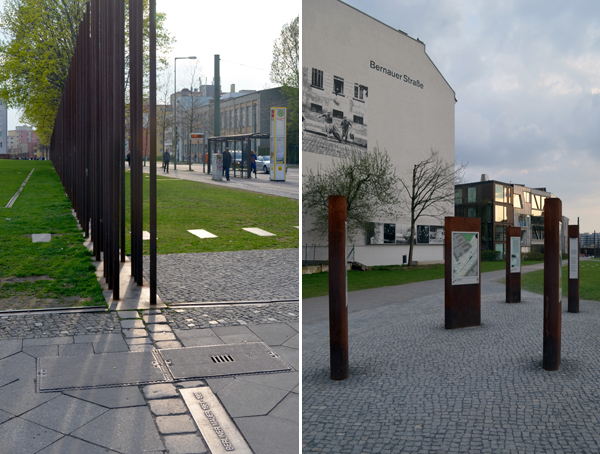
03,04,06.2016
It cannot be claimed that the Berlin of today is a united city. While the wall has come down, it has left in its footprint a chain of remnants surrounding the former western sectors. Differences in building stock are apparent comparing the two zones. More than this, the history of Berlin is everywhere visible in memorials, historical panels and plaques; distinct interest groups have carved up the city into manageably understood chunks. (For example, the text panels on Karl Marx Allee which explicate the specific sites along the boulevard and side-streets are a specific case study of East Berlin’s history which is understandable only as a discrete narrative among the millions of intersecting stories.) Here, words are the chosen means of memorializing the two sequential chapters of Germany’s recent path without ambiguation, and as the impetus for more words of discussion.
When the wall was breached in November 1989, a reverse invasion as those outside in East Germany entered the small western city, it was a physical manifestation of the concurrent political changes. This moment was important as a signal of the failure of the Communist system in the West [1] and so the official narrative of the BRD would reflect the brutality of East Germany practically and ideologically.
Above | Bernauer Strasse
Around this same period architects experimenting with the relationship of form and language were finally moving from paper to built projects. This strategy of using built form to record, preserve, and underscore specific physical and political conditions throughout the city, in conjunction with the proliferation of the use of text as a means to memorialize the visually ambiguous, can be seen as a theme in Berlin – used most specifically at Wall memorials. Peter Eisenman’s projects for Haus am Checkpoint Charlie (1987) and the Memorial to the Murdered Jews of Europe (2005) bookend this period of transformation in the city with two indexical works, both didactic and evocative.
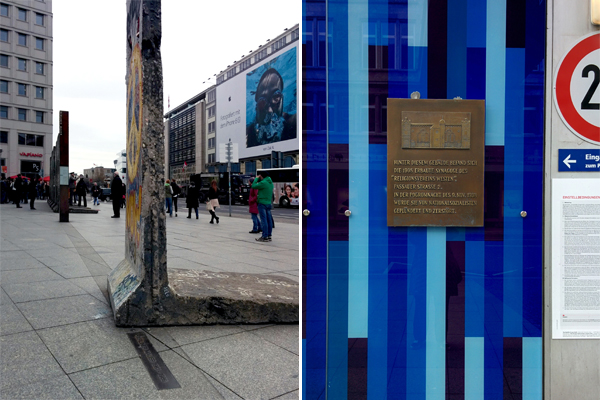
Sections of the Berlin Wall at Potsdamer Platz | Memorial to a Synagogue plundered on Kristalnacht in 1938
Rather than a particular style, we recognize a number of signs presenting to us that a building has been edited. Just as some might argue there is no “Nazi-style architecture” in spite of the common atmosphere that unites many of those projects, these expository works also adopt distinctive characters, and yet they remain recognizable as a family. The juxtaposition of the neoclassical column, the patches of repaired stone, and the glass rainscreen at Schinkel’s Altes Museum, for example, speaks to the destruction, repair, and changes to the frontal portico. Rather than a recognition of style, there something in their palimpsestic texture that links these projects together; the cut, the field, the stella, the word, the reflection, the detail, the lack of detail.
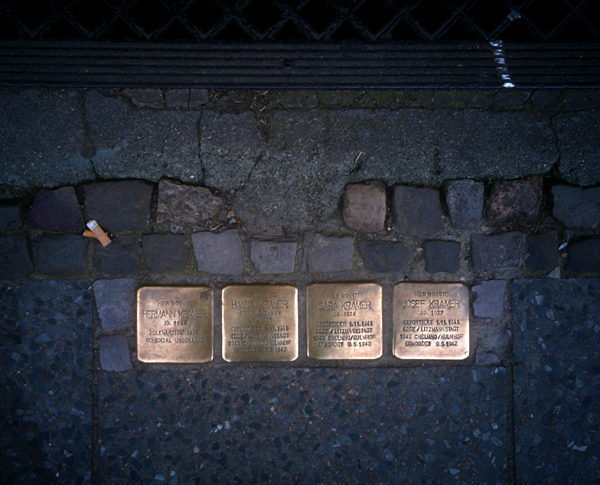
Solperstein in Mitte
At its smallest scale (a single cobblestone) and its largest scale (spanning many cities throughout Europe) the Stolperstein project by artist Gunter Demning creates an icon which draws attention to text that is both extremely personal and also universal. Here an example in the Mitte district of Berlin recognizing the extermination of Jewish individuals, the word “murdered” is used with purpose and precision.
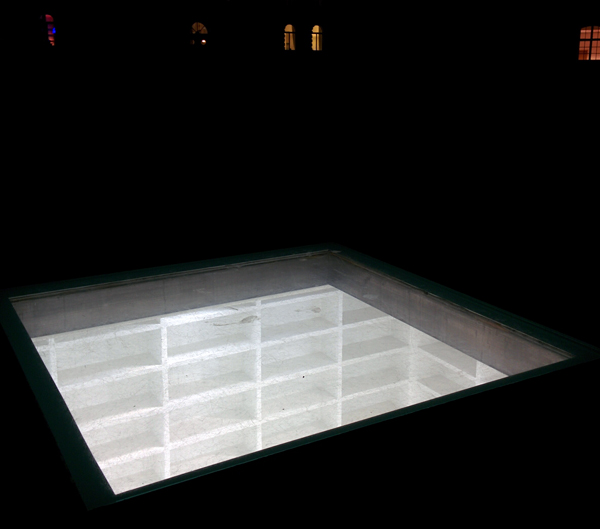
Book Burning Memorial
The Book Burning Memorial at Bebelplatz in the center of Berlin employs the absence of words / books (just two small plaques nearby explain the memorial) in an underscoring of how important language really is.
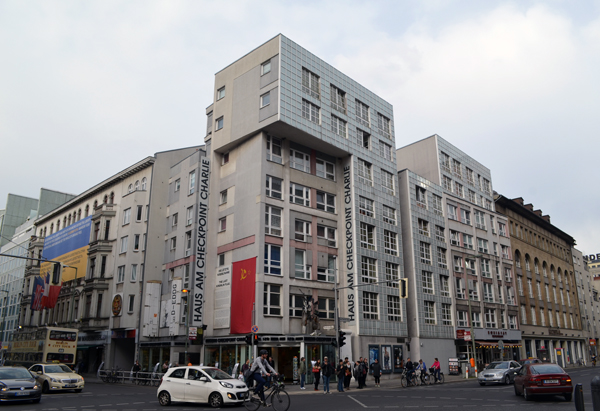
Haus am Checkpoint Charlie
Peter Eisenman’s Haus am Checkpoint Charlie explores both the context of grids in Berlin, as well as the concept of the grid itself. The overlapping systems express themselves in mass and pattern on the surface of the building. They are of the place, and yet completely abstracted, a representation of the act of architecture as a process and the building as a frozen moment.
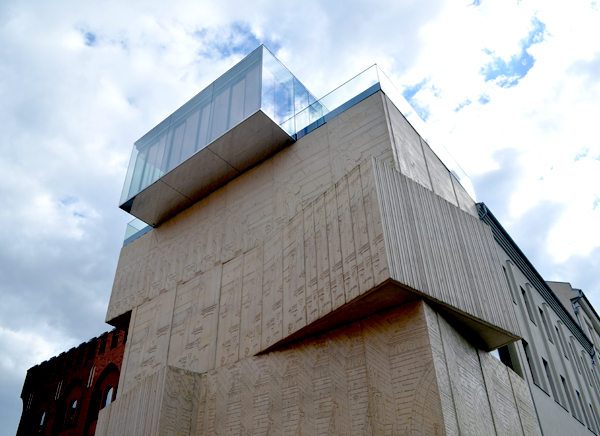
Tchoban Foundation Museum for Architectural Drawing
The Tchoban Foundation Museum for Architectural Drawing is a descendant of the etched concrete projects of Herzog and deMeuron. Still, the literal translation of the act of drawing to the container of the building draws similarities with Eisenman’s work at Checkpoint Charlie.
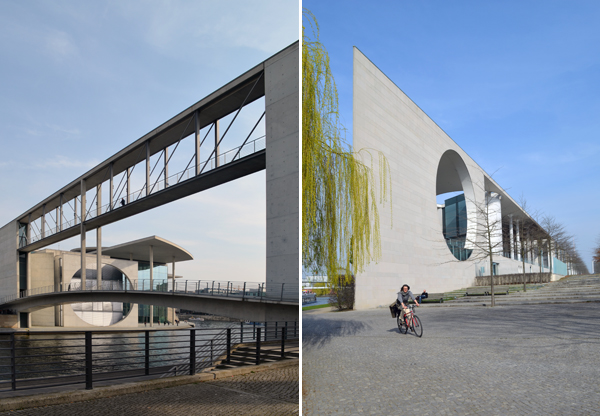
Marie Elisabeth Luders Haus and Paul Loeb Haus | German Chancellery, both buildings “sculpted” by the Spree
The Marie Elisabeth Lüders Haus and Paul Loeb Haus are built for the German government offices and span the Spree as a symbol of connecting East and West. Through their complex courtyard scheme they are able to present at once the austerity of a governmental colonnade. The split at the river allows singular moments to be sculpted, adding richness to the regimented building.
1. In the same year very different circumstances in China were experiencing a retrenchment in this system